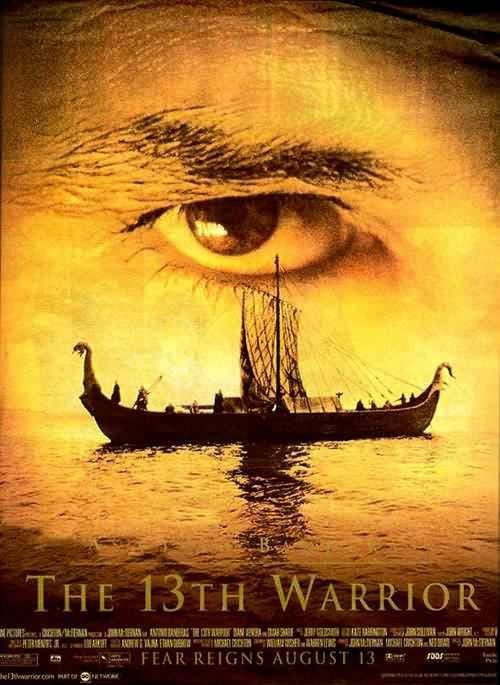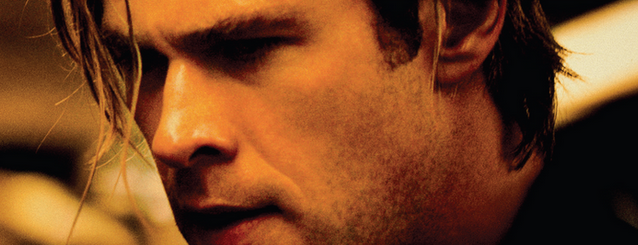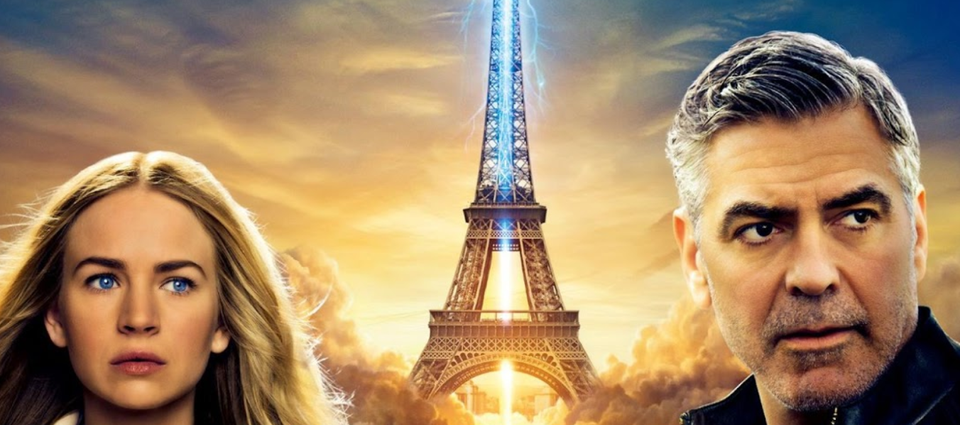The 13th Warrior
Vikings! Heroic muslim warriors! Michael Crichton! Antonio Banderas! John McTiernan! What could possibly go wrong?

Hype is an unpredictable thing. Sometimes, it’s easy to hype up a project, usually because it follows on naturally from something else successful. Other projects get hyped because they capture public attention virally. Another source of hype comes from the creatives and stars attached to a project.
It’s the mid-1990s. A movie studio has acquired the rights to an unadapted Michael Crichton novel, The Eaters Of The Dead. Crichton has long been a name in Hollywood through his writing and directing. His books, most recently Jurassic Park, have sold millions of copies, and the adaptation of Jurassic Park made a ton of money and wedged the door wide open for digital special effects to become a huge part of the industry. Surely, the execs think, this one is a no-brainer. People love Crichton. Plus Crichton says he’ll come on-board as producer.
As director, how about...John McTiernan? His reputation is good. He’s had success with quality action fodder like Predator, Die Hard and The Hunt For Red October. We’ll get William Wisher on board for the screenplay. He’s worked with Jim Cameron! He co-wrote Terminator 2! What about the male lead? Antonio Banderas is hot right now. Handsome, charismatic, dependable, and probably quite cheap.
In The 13th Warrior, Banderas plays young Baghdadi nobleman and poet, Ahmad ibn Fadlan. He makes kissy eyes at the wrong woman and her husband has the Caliph exile him to become ambassador to the Volga Bulgars. He runs into some friendly Norsemen at a trading post, attends a funeral, and a wise woman picks him to be the thirteenth member of a party, led by a prince, Buliwyf, who are to head to the far north to do battle with a terrible, ancient and resurgent evil in the lands of Hrothgar.
Ahmad is rather unhappy at this, but he can’t refuse, and though the Norsemen mock him for being different and riding a small horse, he impresses them through displays of horsemanship and astounding linguistic legerdemain. He learns their language just by listening. Buliwyf comes to respect him.
They arrive in Hrothgar’s halls, where they are told their foes are the demonic Wendol who travel in the mist, slay men, and carry off their heads. The group discover a Wendol amulet, resembling the Venus of Willenstein, which is said to represent The Mother of the Wendol. That night, after a feast and an argument, the warriors wait in the hall for the Wendol and fight them off. Despite the group having killed a few Wendol, none of their bodies remain in the morning.
The group spend the next day preparing the town for the Wendol’s full assault. It duly comes, the thirteen warriors lose a few more fighters, and Ahmad proves himself in battle. Buliwyf looks for another way out, and the group consult another wise woman who dispenses some exposition for them – seek out the Mother and her warlord, and kill them.
The warriors find the Wendol lair, penetrate into the heart of it, and Buliwyf attacks and kills the Mother but is poisoned in the process. The warriors escape and wait for the Wendol warlord to seek revenge. Buliwyf, desperately sick and weak, fights alongside his men in a last stand, and defeats the warlord and the Wendol flee. The poison kills Buliwyf and after his funeral, Ahmad returns home, feeling himself a true man.
Were the critics right to pan this film? Yes and no.
Production began in 1997 and the film came out in August of 1999 and nobody gave two shits about it. It didn’t help that The Sixth Sense was still dominating at the box office. The marketing material probably hindered things too. The theatrical poster is uninspiring and tells you almost nothing about the film, except it has Vikings in it. The trailer is a bizarre and poorly conceived 90s cinema time capsule. Critics were not impressed either. They dubbed the movie “under-developed” with a “C-grade script”, although some reviewers noted it was “superficially irresistible”. The 13th Warrior also laboured under an R-rating, which typically makes profitability a tough ask.
The final nail in this film’s coffin was the year-long production delay, thanks to reshoots under the directorial control of Crichton, and rescoring, and the fact that the budget somehow ballooned to an eye-watering $160 million. For comparison, here are a number of other 1999 releases and their budgets, in US Dollars:
- The Phantom Menace – 115 million
- The Sixth Sense – 40 million
- The Matrix – 63 million
- The Mummy – 80 million
- The World Is Not Enough – 135 million
- Wild Wild West – 170 million
- Shakespeare In Love – 25 million
- American Beauty – 15 million
- The Green Mile – 60 million
Massive budget, crap marketing, R-rating, reshoots...yeah, the omens were not good. But here’s the thing – I believe this film actually fits into the tiny category of movies which nobody in Hollywood knew how to market effectively but would turn out to have a huge audience waiting to watch it at home. Films like Tremors, or The Shawshank Redemption.
There is quite a lot wrong with it, but nothing fatal. For one, there is nothing about this film which explains where the huge budget went. Banderas is the only big-name actor in the cast. The cinematography is broadly uninspired and muddy, but does manage to achieve beauty on occasion. A central group of thirteen characters is too many and the film can’t cope, not even when it whittles the group down to a core seven. Many of Ahmad’s Norse companions are little more than chunky, bearded men waiting for their death scene.
It is also quite a silly movie. That’s to be expected for a movie made up of Ahmad ibn Farhad’s real-life journey being mashed into the Beowulf legend. Ahmad learning Norse purely from observation over the period of a week before being fluent is preposterous, but necessary. The scene where the heroes consult the second wise woman, presented as being a mad old lady, before taking her suggestions as holy writ is one that adds nothing to the film. This scene reeks of being added in the reshoot for narrative stiffening.
Most disappointingly, while the film does sport many large-scale sets and spectacular action sequences, they are not notably well-choreographed or shot or staged for a film of this budget. Given the superb action on display in other 1999 releases – The Matrix, The Mummy, Fight Club – the bar for action had been set higher than The 13th Warrior could deliver.
On the positive side of the coin, we have the performances. Banderas is excellent in the lead, prissy and cowardly at first but eventually learning to adapt and become a warrior. His arc is pleasing because he never compromises his values nor shies away from a challenge. Two other actors delivered stand-out performances. Dennis Storhoi has great fun as the cunning and witty Herger, acting as Ahmad’s principal foil. Vladimir Kulich does fantastic work as Buliwyf. He manages to make Buliwyf simultaneously noble and humble; charismatic and quiet. Kulich brings Buliwyf to convincing life through a heroically calm, stoic and understated performance.
And although I feel the action is not of the highest standard, there is a lot of it and it is entertaining and bloody by the standards of 1999. The stakes are always clear and meaningful. There aren’t many wasted moments. The story rattles along at a good pace and the final sixty minutes are chock full of action and adventure.
At the end of the day, The 13th Warrior is uncomplicated, undemanding fun. Yes, it has a tendency to look like crap and the script is hokey fantasy nonsense, but it is much better than its dire box-office receipts imply. As a $160 million dollar movie, it stinks. No wonder it failed. But as a late-night movie on TV, on its own merits, on the story it tells and the fun it has telling it, it is worth watching. It is a movie for 90s lads on the beers with a take-away on their laps after the pub. On its own merits, it deserves its cult following.



